Zinnia Flower Varieties: Colorful, Easy, Fast-Growing!
No summer garden is complete without colorful zinnias. Is there an easier or faster flower to grow? Sprinkle them in full sun and you’ll have seedlings in days!While there are many flowers that may be more elegant, zinnias rank high in “happiness factor.” Nothing gladdens the heart quite like a bouquet of cheerful, crayon-colored zinnias.
Plus, they’ll thrive during the long hot days of summer, when other flowers have given up, and continue to flower profusely until frost finally kills them in the fall. Heat- and drought-resistant, they keep branching willingly so the more you cut them to share with friends and family, the more flowers you will have. Talk about a hard-working flower!
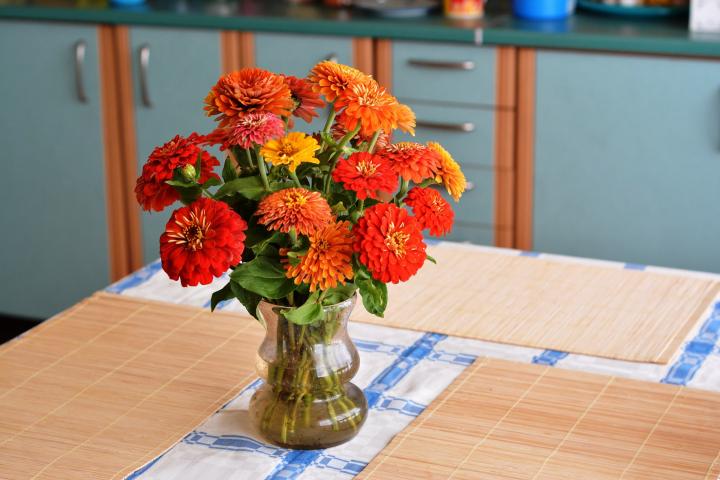
According to the Association of Specialty Cut Flower Growers, zinnias are one of the best flowers for the cutting garden because of their bright colors, strong stems, and long vase-life.
Varieties of Zinnia Flowers
Zinnias come in a wide range of heights, flower forms, and every color except blue. There is even a green one called ‘Envy’.The zinnias most commonly found in our gardens are Zinnia elegans which range in height from the tiny 6 inch tall ‘Thumbelina’ to the four foot tall plus ‘Benary’s Giants’. They can have semi-double, fully double, dahlia-like flowers, or ones with rolled, quill-like petals.
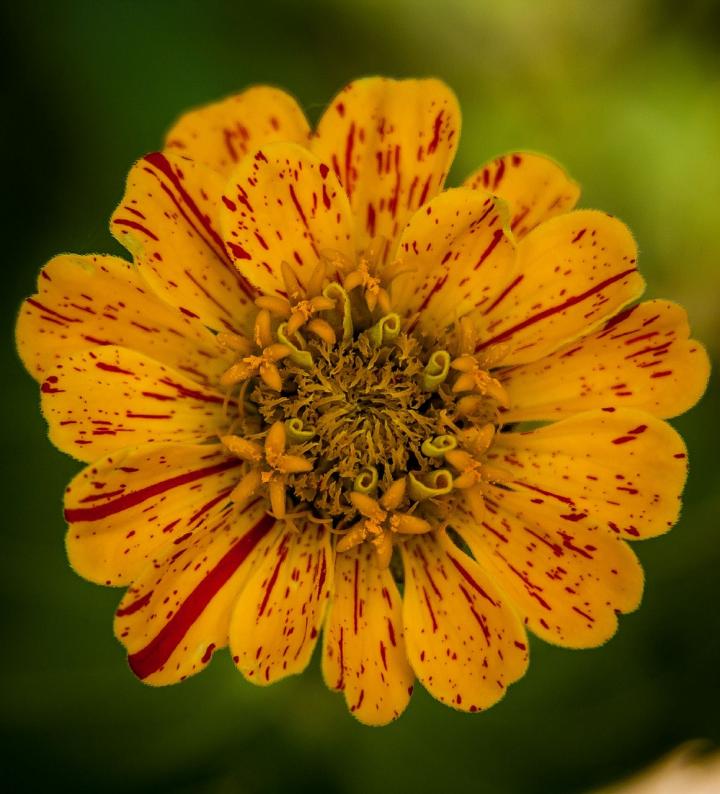
Varieties like ‘Peppermint Stick’ and ‘Candy Stripe’ are multi-colored.
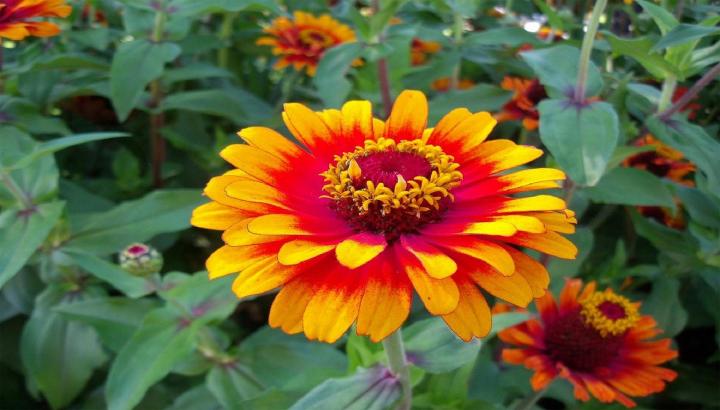
AAS winner ‘Zowie Yellow Flame’ is an eye-popping gold with an iridescent magenta center.
Next up is Zinnia angustifolia, also called narrrow-leaf zinnia. It is a low-growing species with small golden yellow, white, or orange single flowers. AAS winner ‘Crystal White’ is only 8-10 inches tall making it popular for low front borders or for growing in hanging baskets, window boxes, and other containers. They are so heat and drought resistant that they are often planted in “hell strips”—the areas along parking lots, sidewalks, and roadways where full sun and extra heat radiating from the pavement fries most plants.
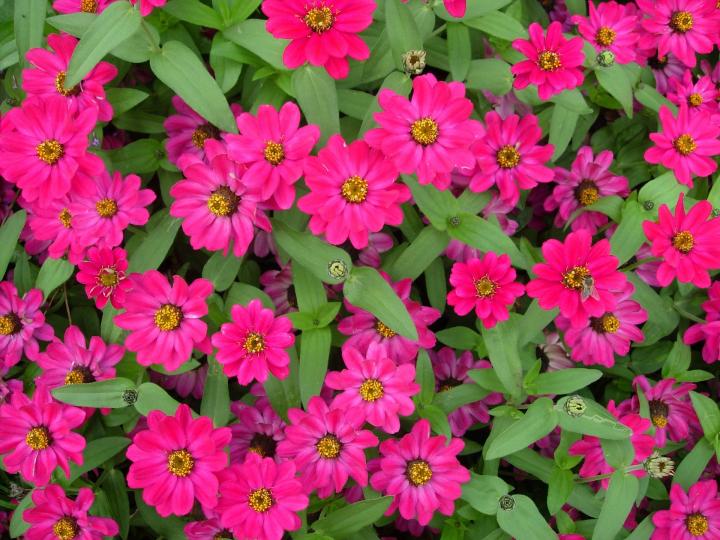
Zinnia Profusion Cherry
Hybrid zinnias in the Profusion series are a cross between elegans and angustifolia. Another AAS winning group of plants, they have the best traits of both parents - dazzling colors, continuous bloom, and heat, drought, and disease resistance. They grow 12 inches tall, are naturally branching, and form neat clumps covered with flowers.
Growing Zinnias
Zinnias are easy to grow from seed. Pick the sunniest spot you have, enrich the soil with a little compost, and sow the seeds about 1/2 inch deep. We’ve know folks who just sprinkle the seeds—and voila!
It’s not too late to start seeds in June. The seeds are large and have a high germination rate. Direct-seeded, they will catch up to transplanted ones and be in bloom in about 6 to 8 weeks.
They’ll sprout in 5 to 10 days. Thin them to stand about 9 to 12 inches apart. This is one plant you won’t have to fuss over. They are happy with an inch of water a week and need little additional fertilizing. Soon you’ll be picking armloads of flowers!
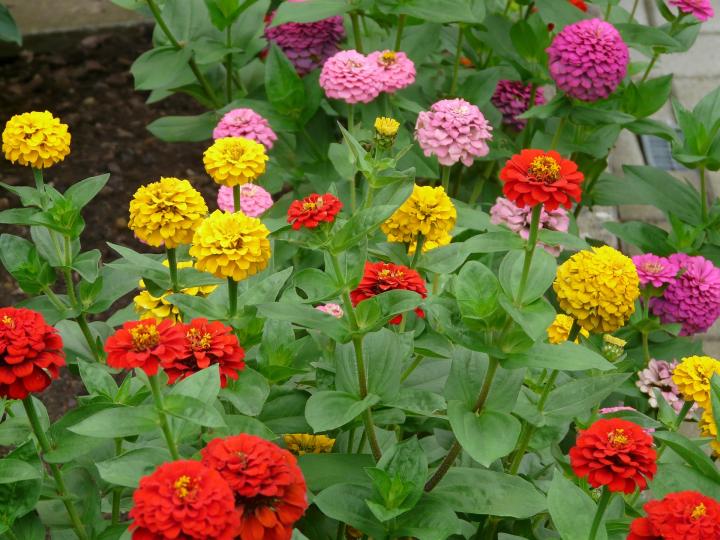
Whether you are looking for an indestructible bedding plant, a tall hedge of flowers for cutting, or something in between, there are hundreds of zinnias to choose from. Since they are annuals, you are not “locked in” and every year you can try a new variety.
Read more on the Almanac’s Zinnia Plant Page.
About This Blog
Get
inspired by Robin Sweetser's backyard gardening tips. Robin has been a
contributor to The Old Farmer's Almanac and the All-Seasons Garden Guide
for many years. She and her partner Tom have a small greenhouse
business and also sell plants, cut flowers, and vegetables at their
local Farmer's Market.








No comments:
Post a Comment